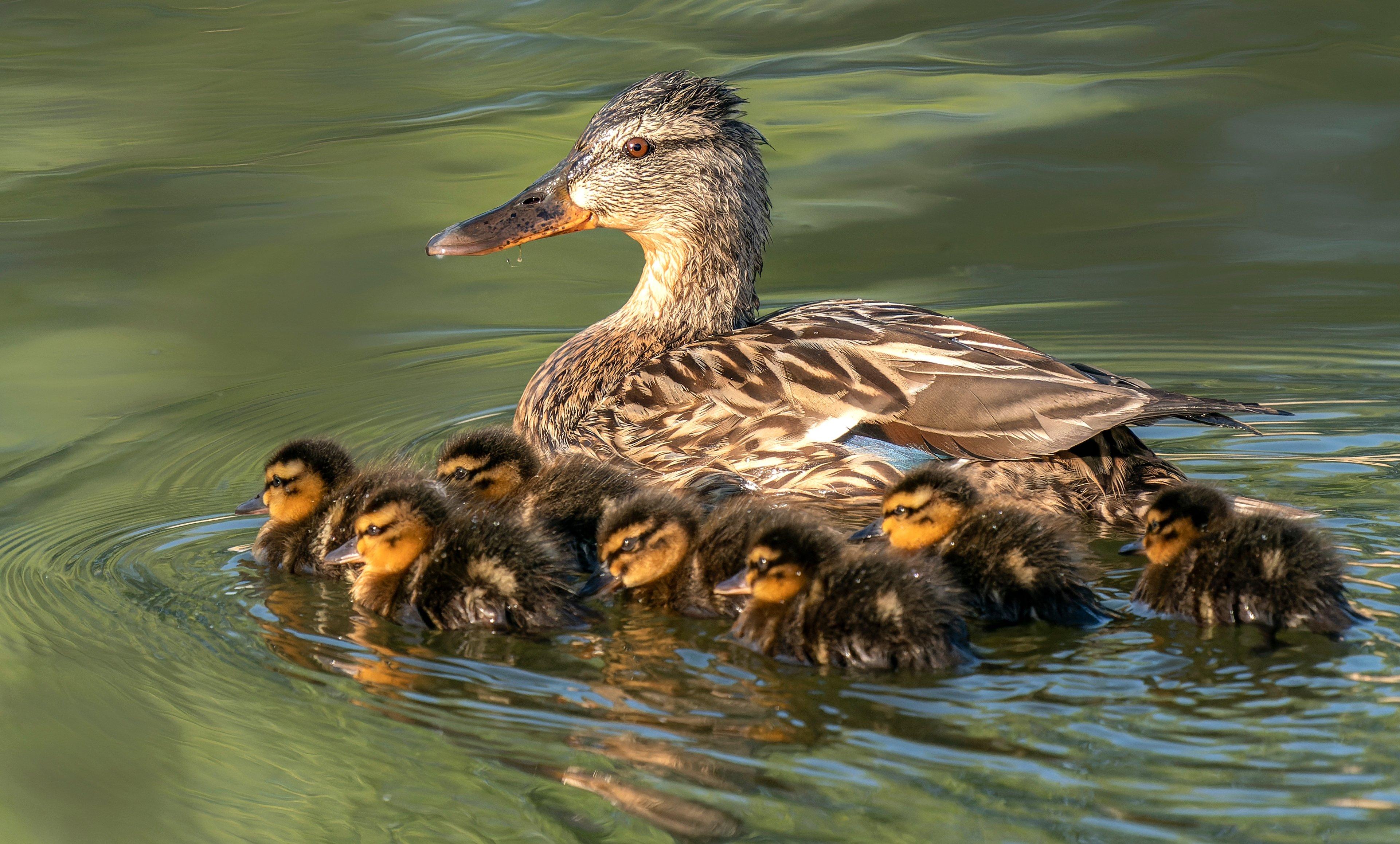Production in many areas appears to be good, so hunters might be in for a solid fall flight

Puddle duck broods seem to be abundant across the Dakotas and eastern prairie Canada. Photo by Albert Beukhof
Breeding duck numbers decreased slightly this spring, but biologists say there’s still plenty of optimism for the 2023 season.
The 2023 Waterfowl Breeding Population and Habitat Survey, released in mid-August, estimated the breeding duck population at about 32.32 million, which is about 7% less than 2022 and 9% lower than the long-term (since 1955) average. The May pond count, a critical indicator of waterfowl habitat and potential production, indicated about 4.98 million ponds, which was a 9% decrease from 2022 and 5% lower than the long-term average.
Those numbers don’t sound great, but Frank Rohwer, president and chief scientist for Delta Waterfowl, said they’re not as bleak as they might seem.
“We don’t hunt the breeding population,” he said in a Delta press release. “We hunt the fall flight, which is made of the breeding population plus this year’s duck production. Duck production is the key to the upcoming hunting season.”
And production in many regions should be good. Rohwer said several critical duck nesting areas received timely rains after the survey was conducted.
“I think duck production is going to be a much better picture than what we’re seeing in these survey numbers,” he said in the release. “The Dakotas got rain in late May after the pond count data was assessed, and then we’ve had intermittent rain throughout the summer. Many areas of the key Prairie Pothole Region breeding grounds stayed relatively wet, and that’s really good for renesting and duckling survival — two of the big drivers of duck production. Saskatchewan started the spring with better water conditions than in 2022, and summer rains helped keep that water later in the nesting season than we have seen in recent years. I was impressed by the number of blue-winged teal broods I saw in southern Saskatchewan in July.”
Don’t Miss: How Contest Calling Can Make You a Better Duck Hunter
Chris Nicolai, waterfowl scientist with Delta Waterfowl, said production from prairie nesting puddle ducks — including blue-winged teal, gadwalls, and shovelers — looks promising across the Dakotas and eastern prairie Canada.
“My observation from field work and driving around is that duck production was really good in the Dakotas,” he said in the release. “I’ve been seeing broods of puddle ducks all over.”
The 2023 survey estimated about 6.1 million mallards — an 18% decrease from 2022. That’s also 23% lower than the long-term average and the lowest index since 1993. Mallard numbers dropped about 36% in the eastern Dakotas and 50% in southern Saskatchewan, but increased about 8% in southern Alberta.
Blue-winged teal, the second-most abundant North American duck, decreased by about 19% from 2022, falling to about 5.25 million. That’s still 2% higher than their long-term average.
Pintails rebounded from a record low in 2022 with an index of about 2.22 million, up 24%. However, that’s still 43% lower than the long-term average.
Green-winged teal breeding populations were estimated at 2.5 million, up 16% from 2022 and 15% higher than the long-term average. Gadwalls declined about 5% but remained 25% higher than the long-term average. Shovelers decreased about 6% but were 8% higher than the long-term average. Wigeon decreased about 14% and were 28% lower than the long-term average.
The survey also had some good news for diver hunters. Canvasback numbers increased to about 619,000, which was 6% higher than 2022 and 5% higher than the long-term average. Redheads decreased to about 931,000, which was a 13% decline but still about 27% higher than the long-term average. Scaup (bluebills) dropped about 4% from 2022, putting them about 29% lower than the long-term average.
Don’t Miss: Counting Ducks: The Inside Story Behind the North American Waterfowl Survey
The breeding population survey, which began in 1947, is conducted each year in May and June by the U.S. Fish and Wildlife Service and Canadian Wildlife Service by ground, airplane, and helicopter across a 2-million-square-mile area including parts of Alaska, Canada, and the north-central United States — the principal waterfowl breeding areas of North America. Biologists evaluate habitat conditions in Prairie-Parkland Canada and provide information on the spring size and trajectory of 19 duck species or species groups, plus Canada geese, coots, and swans. The information is then used to establish annual waterfowl hunting regulations and provide long-term data for waterfowl conservation.










